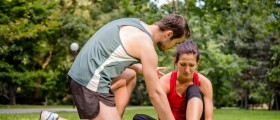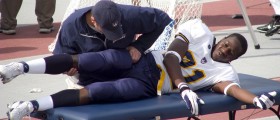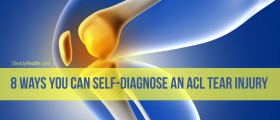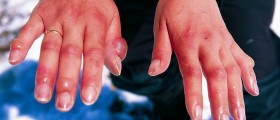
All athletes, especially those whosesport involves fast running and speed in general, know how hamstringis important for them and how it feels when it gets hurt.
Basically, hamstring is a musclestretching from our pelvic area and reaching down all the way to ourlower leg. Being such, hamstring is involved in most of our dynamicswhich consider movement of our lower limbs. Thus, it is at the sametime extremely important and extremely prone to getting injured whilestrained excessively.
Hamstring consists of three parallelmuscles and any of them being injured affects the whole group.Injuries, based on severity can have more than one degree. It canmerely involve the muscle being too strained, or it can go all theway to the muscle being ruptured completely.
After experiencing a hamstring injury,one is, in most cases, immediately incapable of moving correctly andpain-free, the severity depending of the damage done on the muscle.
The first degree of injury involvesminor damage to the muscle, simple straining resulting in smallswelling, painful but possible walking and difficulties in leglifting process.
The second degree is reflected throughsignificant pain and swelling, the pain being felt even when touchingthe strained area. Walking is affected in this case; limping isobvious and unavoidable along with moderate swelling and a bruiseappearing. Additionally, leg Flexing is either extremely painful ornot possible.
The final degree of hamstring injurymeans that the injured person is unable to walk on his or her own, inpain even while resting and having a easily visible bruise andswelling around the injured area.
Many factors may result in hamstringinjury, some of them being lack of worm-up, muscle fatigue, lack ofphysical fitness and overall condition or a direct hit from anotherparty while playing sport. Also, people with one leg shorter than theother can be in danger of straining the muscle on the longer legsince it is more strained.
Recovering from this injury can takeplace at home, unless it is a third degree type when consulting aphysician is necessary.
In all other cases, resting andrelieving muscles form stress is crucial. Applying ice andcompression bandages helps the healing process and reduces theswelling and possible inflammation.
When the muscles heal enough to enableyou to walk freely gradual straining exercises aid the recovery andare the next step. Applying a thigh wrap or a bandage which will holdthe muscles in place is highly recommended as well as knowing thatcomplete recovery can be achieved only by gradually getting to it.

















Your thoughts on this
Loading...